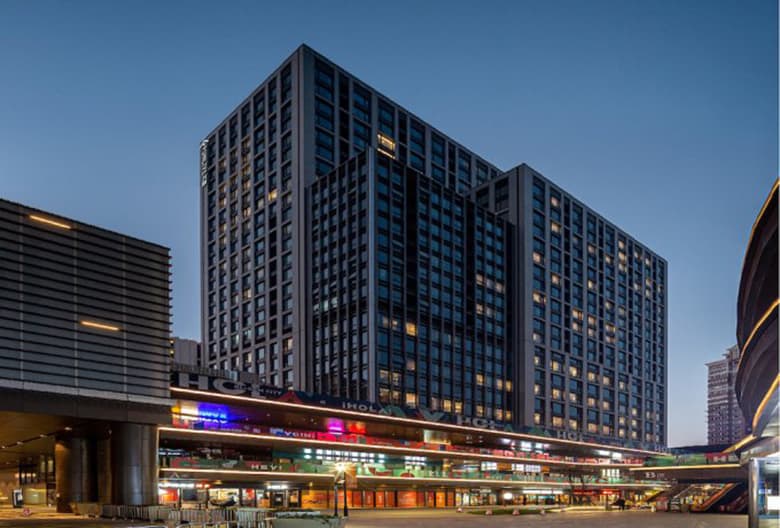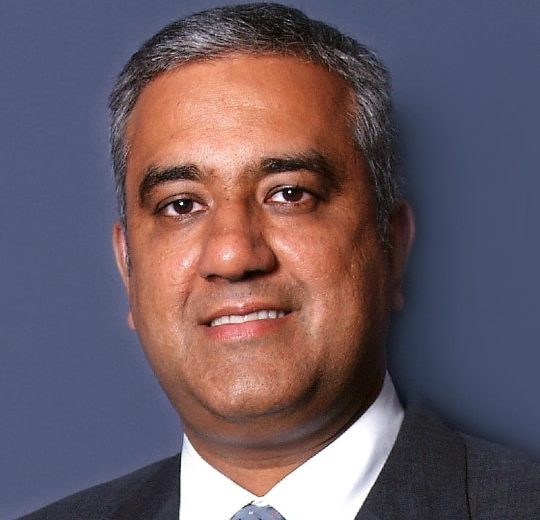
Funlive’s Starcrest project in Shanghai’s Putuo district
US private equity giant KKR has formed a joint venture with Chinese apartment operator Funlive to develop and operate a 3,000-unit multi-family project in the southern suburbs of Beijing as mainland authorities continue to take steps to encourage rental residential development in the country’s major cities.
A Funlive representative told Mingtiandi that the project will feature 100,000 square metres (1,076,391 square feet) of living space and sit next to the interchange of Daxing high-speed rail station and Huangcun subway station in Daxing New Town, a planned community near Beijing’s second international airport.
In a Wednesday LinkedIn post, Funlive’s boss said the deal reflected investors’ confidence in China’s multi-family sector.
“To acquire this site in Beijing is a rare opportunity to develop a market-leading multi-family community project in a strategic location,” said Keith Chan, chief executive of the rental residential unit of mainland developer China SCE Group.
Betting on Beijing’s New Airport
John Pattar, partner and head of real estate for Asia at KKR, who closed on $1.7 billion for his firm’s first dedicated Asia real estate fund in January of this year, said his team was drawn to the “compelling qualities” of the project, such as its superior location, connectivity and amenities.

John Pattar, Partner and Head of Real Estate, Asia, KKR
The transit-oriented development connects directly to both Daxing station on the Beijing-to-Xiong’an high-speed rail line and to Huangcun station on the Daxing Line of Beijing’s metro system.
Daxing New Town is a 1,380 hectare (3,410 acre) innovation district being developed under a masterplan by UK architects Chapman Taylor, combining residences with shopping centres, office space and cultural amenities near Beijing’s Daxing airport, which opened in late 2019.
Funlive, which acts as a fund manager and multi-family developer and operator, noted that the project will benefit from the strong fundamentals of China’s multi-family market, which have been bolstered by the COVID-19 pandemic as tenants look for professionally managed residences and investors turn to the steady returns offered by rental residential.
The Daxing residential development is part of a mixed-use project awarded to China SCE at an open auction in May. The firm paid RMB 4.52 billion (now $710 million) for the 108,200 square metres of land as part of a joint venture with fellow Hong Kong-listed developer Jinhui Group.
The project’s maximum gross floor area, including a commercial element, is 262,400 square metres, meaning the buyers paid roughly RMB 17,226 (now $2,706) per square metre of potential GFA. According to its website, Funlive has rental residential projects in 12 cities across China, including Beijing, Shanghai, Guangzhou and Shenzhen.
Multi-Family Future
The investment aligns with the growing popularity of rental residential projects both as a solution to the housing affordability crisis in China’s major cities and as a source of returns for institutional investors.

Funlive CEO Keith Chan
“We are optimistic about the prospects of multi-family and long-term rental assets in China, buoyed by the attractive fundamentals and supportive government policy,” Pattar said.
In announcing the closing of its KKR Asia Real Estate Partners in January, Pattar had singled out multi-family in mainland China as one of the top targets for the vehicle.
“In China, there is a growing need for multi-family and we see some opportunity to work there with operating partners,” Pattar told Mingtiandi at the time.
With homes in Beijing and Shanghai now priced out of reach of even white-collar workers, the government has been requiring rental residential elements in many new development projects in the core districts of first-tier cities and providing funding support to investors to encourage development.
Over this past weekend, the Shanghai branch of China’s central bank and the China Banking and Insurance Regulatory Commission held a meeting with commercial banks and developers to encourage lending to rental housing projects, according to a report in the South China Morning Post, with similar policy support also taking place in the capital.
Fund Managers Pile In
In an appearance on MTD TV in May, Funlive’s Chan likened China’s multi-family sector to the UK’s housing situation five years earlier. Many developers back then were starting rental-residential projects in Britain, and those portfolios have begun to reach the market.
Chan predicted that more institutions would be adding rental apartments to their property portfolios alongside traditional mainstays like offices. “For China, we are now trying to build up these kinds of assets, and hopefully this will turn into a big one in the coming years,” he told MTD TV.
KKR has made rental residential a recurring theme in its real estate strategies, with the New York-based firm announcing just last month that it had set up a $820 million venture to develop build-to-rent homes in core cities in the UK.
In August last year, the firm famed for its buyout expertise picked up some apartments closer to home when it spent $860 million to buy a newly completed rental residential project in Brooklyn.
In China, KKR’s competitors at Warburg Pincus have invested in a variety of projects targeting the multi-family sector, including rental management platform Ziroom and residential operator Mofang.
Dutch pension fund manager APG jumped into China’s multi-family sector in 2019 when it backed US apartment specialist Greystar in its $450 million closing on a mainland rental apartment fund, which has since gone on to develop multiple projects in Shanghai.
Leave a Reply